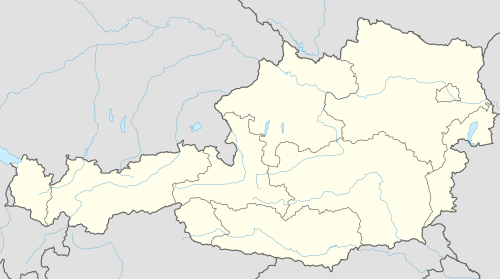Hard, Austria
| Hard | ||
|---|---|---|
 | ||
| ||
 Hard Location within Austria
Location in the district
| ||
| Coordinates: 47°28′00″N 09°40′00″E / 47.46667°N 9.66667°ECoordinates: 47°28′00″N 09°40′00″E / 47.46667°N 9.66667°E | ||
| Country | Austria | |
| State | Vorarlberg | |
| District | Bregenz | |
| Government | ||
| • Mayor | Harald Köhlmeier (ÖVP) | |
| Area | ||
| • Total | 17.46 km2 (6.74 sq mi) | |
| Elevation | 398-400 m (−914 ft) | |
| Population (1 January 2016)[1] | ||
| • Total | 13,205 | |
| • Density | 760/km2 (2,000/sq mi) | |
| Time zone | UTC+1 (CET) | |
| • Summer (DST) | UTC+2 (CEST) | |
| Postal code | 6971 | |
| Area code | 05574 | |
| Vehicle registration | B | |
| Website | www.hard.at | |
Hard is a town in the westernmost Austrian state of Vorarlberg, directly on Lake Constance. Hard's attractions include the Strandbad and the Grünerdamm. Hard is also famous for its skatepark.
An honorary consulate of Brazil is located in Hard.[2]
Population
| Historical population | ||
|---|---|---|
| Year | Pop. | ±% |
| 1869 | 2,305 | — |
| 1880 | 2,085 | −9.5% |
| 1890 | 2,183 | +4.7% |
| 1900 | 2,914 | +33.5% |
| 1910 | 3,637 | +24.8% |
| 1923 | 3,049 | −16.2% |
| 1934 | 3,387 | +11.1% |
| 1939 | 3,488 | +3.0% |
| 1951 | 4,788 | +37.3% |
| 1961 | 6,671 | +39.3% |
| 1971 | 8,887 | +33.2% |
| 1981 | 10,103 | +13.7% |
| 1991 | 10,747 | +6.4% |
| 2001 | 11,471 | +6.7% |
| 2011 | 12,546 | +9.4% |
Geography
Hard has an area of 17.46 km². It lies in the west of the country. Hard is situated on the river Bregenzerach.
History
Around the 7th century, Alemanni settled near Mittelweiherburg. It was the first location in this area. Near Lake Constance around the year 1200, large parts of the woods were cleared on which a new village was built: Hard (Old High German for "forest"). The municipality of Hard was first mentioned in a release letter from Pope Innocent IV to the monastery of Mehrerau in 1249.
In 1794, Samuel Vogel from Alsace opened the first textile factory in Hard. In 1802, the "Allmenden" (common grounds) were lifted. This removal resulted in private fields, pastures and forests that were used for around 1000 years. In 1997, the textile printing museum in Mittelweiherburg was opened.
Harder Schwabenkinder (Swabian children)

From the 17th century to the beginning of the 20th century, poor Vorarlberg farmers sent their children to Swabia to do seasonal work there. These children were called "Schwabenkinder", the action itself was referred to as "Schwabengehen".
Heraldry
The coat of arms of Hard shows two trees and a sailboat. They symbolize the initial activities in Hard: logging and fishing.
References
External links
| Wikimedia Commons has media related to Hard. |

